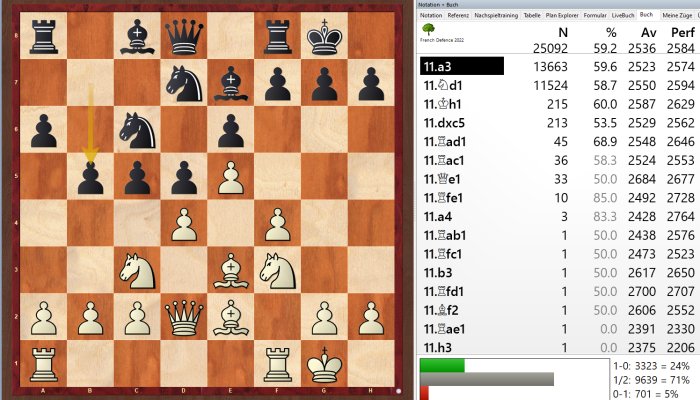The French Defence is an opening with a marked strategic character, but it also offers rich tactical possibilities to both sides. This video course is aimed as a tactical guide for Black, featuring the most typical combinations for the French structures. The reader is also invited to find combinations delivered by White, in order to become aware of the possible dangers. For virtually all types of white combinations, the video course features symmetrical equivalents for Black, but also tests how Black can withstand the White aggression.
Video course 1
41 Games are presented with more than 100 questions to solve. Themes: Tactics involving the h7/2-. g7/2- and f7/2-pawn, the pawn break f4-f5, the counter move g7-g5.
• Video running time: 4 hours 50 Minutes (English)
• With interactive training including video feedback
• Extra: Training with ChessBase apps - Play key positions against Fritz on various levels
Video course 2
38 Games are presented with more than 100 questions to solve. Themes: Pawn Chains (e6, d5, c4; e5, d4, b2), The French Isolani and The French Bishop.
• Video running time: 4 hours (English)
• With interactive training including video feedback
• Extra: Training with ChessBase apps - Play key positions against Fritz on various levels
French Powerbook
For the French Powerbook top-quality material was used: 870,000 games from the Mega and from correspondence chess, plus 655,000 games from the playchess.com engine room. The statistics in the Winawer, particularly in the sharp line 7.Qg4 Qc7, are hardly appealing for Black, and they help to understand why the top players use this set-up only very rarely. In huge contrast to the Steinitz Variation 3.Nc3 Nf6. E.g. the line 4.e5 Nfd7 5.f4 c5 6.Nf3 Nc6 7.Be3 which currently is the most popular continuation for both sides

Here 7...cxd4 is still the most popular move but there is a trend to play 7...Be7 and particularly 7...a6 – which is already the most often played move in the online database.
In the Steinitz Variation White has only a few promising alternatives but Black has a number of good options to deviate. For instance with 7...a6 8.Qd2 Be7 9.Be2 b5 10.0-0 0-0.

The statistics in the Powerbook for this line are based on almost 24,000 games while the online database has little more than a 1,000 games with this variation.
French Powerbase
The 659 selected annotated games offer excellent study materials. Top players such as Carlsen (2 annotated games), Caruana (5), Anand (4), So (2), Radjabov (2), Nepomniachtchi (1), Karjakin (1), Harikrishna (1), Navara (1), Vitiugov (2) analysed their games, plus French experts like Marin (46), Edouard (31), Sadorra (28), Atalik (23) and Berg (23). All in all, there are 10.275 such games and they do have a rating-average of at least 2580 (except games with annotations and those of French experts).

A double click on the database loads the games overview. A further double click loads the relevant game. The tab Players lets you sort the games according to frequency (with the tab Total). This helps to take a closer look at games from players such as Shirov (an expert for White) or Meier, Kortschnoj and Volkov.

The games can be played through or further investigated with an engine or a Powerbook.






